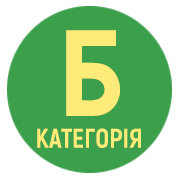THE INFLUENCE OF GADGETS ON VISUAL ACUITY INDICATORS OF TEENAGERS DURING DISTANCE LEARNING
Abstract
Scientific publications already contain information on the study of changes in children’s life activities and the impact of distance learning on them, in particular, on motor activity, anxiety level, and psycho-emotional state. However, a large load in terms of remote classes is also carried out on the students’ eyes, since they often have to study in conditions that do not always meet all the norms and requirements for classes using computer equipment. It determines the relevance and the purpose of the research – to study the impact of gadgets in terms of distance learning on the visual acuity o f schoolchildren. 140 schoolchildren participated in the research, 13–14 years old (both sexes). They have been divided into two groups (70 people each): I – students who have distance learning (experimental group (EGR), II group – students who study in regular mode (control group (CGR). The examination of schoolchildren has been carried out in the 1st semester of 2022–2023 on the basis of general secondary education institutions. We conducted a questionnaire regarding the duration of screen time and subjective feelings of the state examined teenage schoolchildren in order to identify the impact of gadgets on visual functions. Visual acuity indicators (VIS, visual acuity) and their evaluation have been measured according to the generally accepted method using the Golovin-Syvtsev tables. During the obtained data processing, methods of variational statistics have been used with the evaluation of the Student’s t-test. As a result of the study, it has been established that during distance learning students use mobile phones in 62% of cases; during face-to-face education, mostly children use computers (43%). Distance learning schoolchildren have been characterized by a higher proportion of persons with reduced visual acuity (50%). Schoolchildren who study in the regular mode mostly have standard indicators of visual acuity (54.29%), and the share of people with reduced visual acuity is lower (24.28%), compared to the experimental group.
References
2. Березуєва Т.С. Дослідження фізичної активності студентів в умовах дистанційного навчання і самоізоляції. Вісник ЛНУ імені Тараса Шевченка. № 3 (351). 2022. С. 225.
3. Бєлков Т.О., Малахова Ж.В., Якушевський В.О., Лосік В.Г. Теоретичні аспекти дистанційного навчання з дисципліни «Фізичне виховання». Педагогіка формування творчої особистості у вищій і загальноосвітній школі. 2021 р. № 75. Т. 1. С. 55.
4. Вадзюк С.Н., Ульяницька Н.Я., Бєлікова Н.О., Індика С.Я., Сопіга М.О. Порушення зорових функцій у підлітків з еметропічною рефракцією при візуальному комп’ютерному навантаженні та їх відновлення. Фізіол. журн., 2018, Т. 64. № 5. С. 47.
5. Гозак С., Єлізарова О., Парац А., Дюба Н., Станкевич Т. Особливості дистанційного навчання школярів 1–11 класів під час пандемії COVID-19. Вісник Черкаського національного університету імені Богдана Хмельницького. Серія «Педагогічні науки». Випуск № 3. 2020. С. 14.
6. Дмитроца О., Коржик О., Мотузюк О. Вплив дистанційного навчання на показники гостроти зору школярів. Нотатки сучасної біології. 2022. Вип. 2(4). С. 95.
7. Дрібас С., Пінська О., Даценко О. Особливості організації викладацько-студентської взаємодії в умовах дистанційного навчання. Психологія: реальність і перспективи : збірник наукових праць Рівненського державного гуманітарного університету. 2021. № 16. С. 56–62.
8. Землянська О.В., Третякова Л.Д., Праховнік Н.А., Семененко Р.Ю. Вплив дистанційної форми навчання на психічне та фізичне здоров’я студента. Енергозбереження та промислова безпека: виклики та перспективи: наук.-техн. зб. : матеріали ІІІ Міжнар. наук.-практ. конф. Київ : Основа, 2020. С. 280–286.
9. Маслова О.В., Шахліна Л.Я-Г., Богданович Л.В., Коломієць Т.В., Гопей М.М. Реактивність організму школярів в умовах дистанційної форми навчання як ендоекологічний показник рівня їхнього здоров’я. Спортивна медицина, фізична терапія та ерготерапія. № 2, 2022. С. 59–64.
10. Сироватко З.В., Євременко В.М. Вплив дистанційного навчання на рухову активність студентів. Науковий часопис НПУ імені М.П. Драгоманова. Випуск 3К (147). 2022. С. 363.
11. Табалюк Т.А., Ваврищук А.С., Гукалюк І.О., Табалюк А.М. Вплив віртуального тренування Vivid Vision (США) на зорові функції школярів з міопією слабкого ступеня. Архів офтальмології України. Том 10, № 3, 2022. С. 61–64.
12. Харченко Л.Б., Плиска О.І., Груша М.М., Шкробанець І.Д. Визначення гостроти зору та контрастної чутливості в різних вікових групах школярів. Український журнал медицини, біології та спорту. 2020. Том 5, № 1 (23). С. 230.






